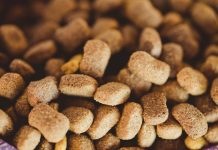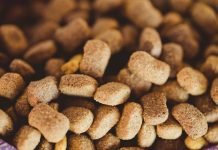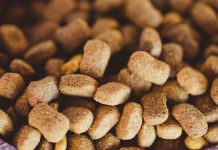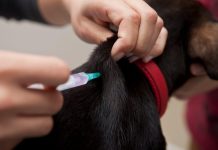Introducing grain-free puppy food to your furry friend can be a rewarding journey towards ensuring their health and happiness. As a caring pet owner, you want to provide the best nutrition possible, and transitioning to grain-free options is a thoughtful step in that direction. This guide is designed to walk you through the process with ease and confidence, offering practical tips and insights to make the change seamless for both you and your pup. From understanding the benefits of grain-free diets to implementing gradual changes in their meals, we’re here to support you every step of the way. Let’s embark on this nourishing adventure together, ensuring your puppy thrives with a diet tailored to their unique needs.
Understanding Your Puppys Nutritional Needs
Ensuring your puppy receives the right nutrients during their formative months is crucial for their growth and overall health. When considering a grain-free diet, it’s essential to understand what constitutes balanced nutrition for your furry friend. Puppies require a diet rich in proteins, fats, vitamins, and minerals. Opting for grain-free puppy food can be beneficial for those with sensitivities or allergies. However, it’s important to ensure the food you choose compensates with alternative carbohydrate sources like sweet potatoes or peas.
Transitioning to a grain-free diet should be done gradually to prevent digestive upset. Here’s a simple guide to help you:
- Start Slowly: Mix a small amount of the new grain-free food with your puppy’s current food.
- Increase Gradually: Over the course of a week, gradually increase the proportion of grain-free food while decreasing the old food.
- Observe Closely: Monitor your puppy for any signs of digestive issues or allergic reactions, such as itching or diarrhea.
- Consult a Vet: Before making any significant changes, it’s wise to discuss your puppy’s dietary needs with a veterinarian.
By following these steps, you can ensure a smooth transition that supports your puppy’s health and well-being. Remember, every puppy is unique, and their dietary needs may vary. Always prioritize their individual health requirements when choosing their food.

Choosing the Right Grain Free Food for Your Pup
When it comes to selecting the perfect grain-free food for your pup, the choices can be overwhelming. It’s essential to focus on a few key factors that will ensure your furry friend gets the nutrition they need. First, look for high-quality protein sources such as chicken, beef, or fish as the primary ingredient. This ensures your puppy receives the essential amino acids for growth and development. Additionally, check for natural ingredients and avoid artificial preservatives or colors, which can be harmful in the long run.
- Choose foods with balanced nutrients, including vitamins and minerals crucial for your pup’s health.
- Opt for brands that offer transparency in their ingredient sourcing and production processes.
- Consider your puppy’s specific needs, such as allergies or sensitivities, and select a formula that caters to those requirements.
It’s also helpful to consult with your veterinarian to ensure the chosen food aligns with your puppy’s dietary needs. By paying attention to these details, you’ll be well on your way to providing a wholesome, grain-free diet that supports your pup’s growth and vitality.

Gradual Transition Techniques for a Happy Tummy
Transitioning your puppy to grain-free food requires patience and a gentle approach to avoid digestive discomfort. Start by gradually mixing the new grain-free formula with their current food. Begin with a small ratio, such as 25% grain-free to 75% regular food, and slowly increase the grain-free portion over a week or two. This method allows your pup’s digestive system to adjust without shock.
- Observe your puppy’s reaction: Keep an eye on their stool consistency and energy levels. Any drastic changes might mean you need to slow down the transition.
- Hydration is key: Ensure your puppy has access to plenty of fresh water, as dietary changes can affect hydration needs.
- Consult with a vet: If you notice any persistent issues or if your puppy has special dietary needs, a vet’s guidance can be invaluable.
By following these steps, you’ll support your puppy’s health and happiness, paving the way for a smooth transition to a grain-free diet.

Monitoring Your Puppy’s Reaction and Health
As you transition your puppy to grain-free food, it’s essential to keep a close eye on their reaction and overall health. Pay attention to their energy levels; a lively and playful demeanor is a good sign, while lethargy might indicate the new diet isn’t sitting well. Monitor their coat for any changes in texture or shine, as a healthy coat often reflects a well-balanced diet.
Keep an eye out for any digestive issues such as:
- Changes in stool consistency – Watch for diarrhea or constipation, which could signal an adjustment period or intolerance.
- Excessive gas or bloating – These could indicate the new food is not agreeing with your puppy’s system.
- Unusual vomiting - Occasional vomiting can happen, but frequent episodes warrant a vet visit.
Additionally, if you notice any signs of allergies such as itching or ear infections, it might be time to reassess the ingredients. Always consult your vet if you have concerns about your puppy’s health during this dietary change.
















